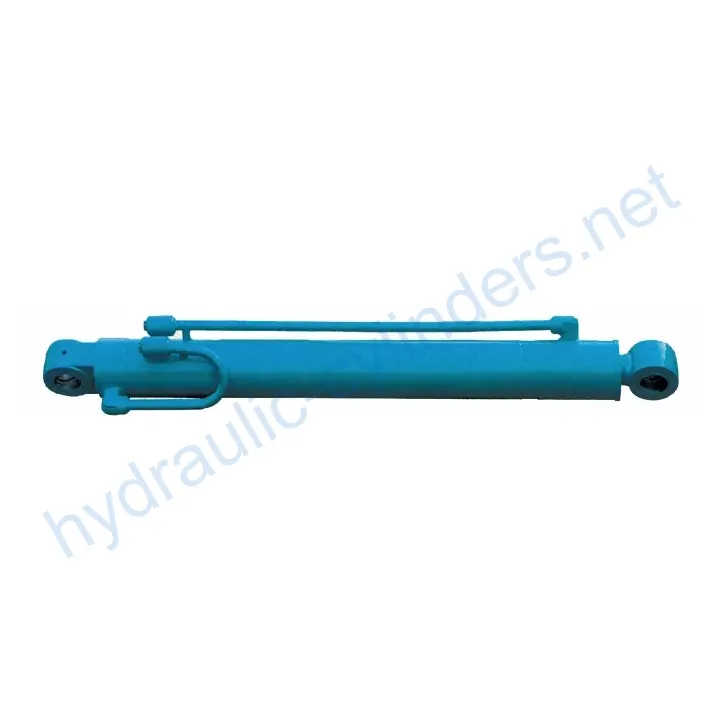Arm Cylinder For Takeuchi Small Excavator TB285C
Arm Cylinder For Takeuchi Small Excavator TB285C
The arm cylinder is a specially designed hydraulic cylinder that is primarily used to provide linear motion and power to the arm of various types of machinery, such as excavators, cranes, and robotic arms. The arm cylinder plays a key role in hydraulic systems, allowing for the efficient movement and control of additional tools or attachments. These cylinders not only enable smooth motion but also have the ability to withstand heavy loads, ensuring high operational efficiency and reliability of the machinery in various working conditions.

Product Features
- High Efficiency Drive: The arm cylinder provides powerful linear motion and force, ensuring high-performance capabilities of the mechanical arm in various operations.
- Precision Control: Through the hydraulic system, the arm cylinder enables precise motion control, making the operation of attached tools more flexible and accurate.
- Durability: Arm cylinders are typically manufactured using high-strength materials and have excellent wear and corrosion resistance, making them suitable for long-term use in harsh environments.
- Multi-functional Adaptability: These cylinders can be widely applied to various types of machinery, including excavators, cranes, and robotic arms, adapting to different job requirements.
- Easy Maintenance: Designed for ease of maintenance and replacement, the arm cylinders facilitate convenient periodic inspections and maintenance, reducing equipment downtime.

Applications
- Construction Engineering: In excavators and cranes, the arm cylinder is used to control the movement of the bucket or boom for earthwork, material handling, and structural installation.
- Manufacturing Industry: In automated production lines, the arm cylinder enables the motion of robotic arms for assembly, welding, and material handling processes, enhancing production efficiency and accuracy.
- Agricultural Machinery: In agricultural equipment such as harvesters and seeders, the arm cylinder controls the movement of operating arms for tasks like seeding, fertilizing, and harvesting.
- Mining: In mining equipment, the arm cylinder is used to control the arm movement of mining devices for ore extraction and transportation.
- Logistics and Transportation: In forklifts and handling robots, the arm cylinder controls the lifting and movement of forks, enabling material handling and stacking.
Design Considerations and Selection Criteria
- Load-Bearing Capacity: The arm cylinder is designed to withstand specific load requirements, ensuring safe and efficient operation.
- Sealing: Various sealing elements such as piston seals and rod seals are used, made of wear-resistant materials like polyurethane and nitrile rubber. The cylinder body and threaded ends undergo fine processing to enhance wear resistance.
- Durability: The arm cylinder is constructed with materials that offer excellent durability and corrosion resistance, ensuring its longevity in demanding environments.
- Safety: Safety features such as pressure relief valves and emergency stop mechanisms are incorporated into the design to prevent accidents and ensure operator safety.
- Maintainability: The design considers ease of maintenance and repair, allowing for convenient inspection, lubrication, and replacement of components.

Sealing and Lubrication
The arm cylinder utilizes various sealing elements, including piston seals and rod seals, made of wear-resistant materials such as polyurethane and nitrile rubber. The cylinder body and threaded ends undergo fine processing to enhance wear resistance. Regular lubrication with the appropriate hydraulic oil is necessary to ensure smooth operation and prolong the lifespan of the cylinder.
Regular Inspection and Preventive Maintenance
- Inspect the arm cylinder for any signs of leakage, damage, or wear.
- Check the hydraulic connections, hoses, and fittings for tightness and integrity.
- Monitor the hydraulic oil level and quality, and replace or top up as needed.
- Ensure the proper functioning of safety features, such as pressure relief valves.
- Follow the manufacturer’s guidelines for maintenance intervals and procedures.
Product Installation Guide
Proper installation of the arm cylinder is crucial for its optimal performance and longevity. Follow these steps:
- Prepare the excavator or machinery for installation, ensuring stability and safety.
- Position the arm cylinder in the designated mounting area and align it with the hydraulic connections.
- Securely attach the cylinder using appropriate mounting brackets or bolts.
- Connect the hydraulic hoses, ensuring proper alignment and tight fittings.
- Check for any leaks and ensure all connections are secure.
- Test the functionality of the arm cylinder through controlled movements.

Safety Considerations and Environmental Factors
When using the arm cylinder, it is vital to prioritize safety measures. This includes following proper operating procedures, wearing appropriate personal protective equipment, and regularly inspecting the cylinder for any signs of wear or damage. Additionally, environmental factors such as temperature, humidity, and exposure to chemicals or abrasive materials should be considered to ensure the optimal performance and longevity of the cylinder.
Troubleshooting and Common Issues
Common issues that may arise with the arm cylinder include leakage, reduced performance, and abnormal noise. Here are some troubleshooting tips and solutions:
- Leakage: Inspect the cylinder seals and connections for damage or wear. Replace any faulty seals or tighten loose connections.
- Reduced Performance: Check the hydraulic oil level and quality. Ensure proper lubrication and replace the oil if necessary. If the issue persists, consult a professional for further diagnosis.
- Abnormal Noise: Inspect the cylinder for loose components or damaged internal parts. Tighten any loose parts and replace any faulty components if needed.
Preventive measures include regular maintenance, proper lubrication, and following recommended usage guidelines to minimize potential issues and ensure long-lasting performance of the arm cylinder.

Remember to organize the article logically, use subheadings for easy navigation, incorporate relevant images or charts to enhance understanding, and ensure that the content is clear, concise, and suitable for readers with varying levels of technical knowledge.
Author: lyl


参观我们的 VR 工厂
通过以下方式参观我们的 VR 工厂
液压缸应用:


